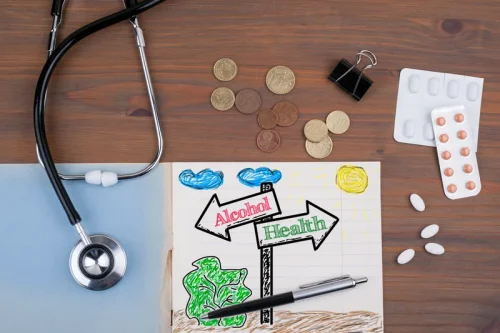
“But our targeted testing numbers, when we test off of specific information, has been roughly 20% positive or in the results management process,” Tygart said. “It is a tough substance to detect” without specific intelligence about an athlete using it, Tygart said. In an apparent tradeoff between the players’ union and league management, the two sides recently agreed to reduce penalties for the in-season use of stimulants such as Adderall. “The league does not have a performance-enhancing substance problem,” said Brandon Parker, spokesman for the NFL Players Association. “We have found that a large number of the violations are ultimately deemed to be unintentional use of a supplement that was contaminated.” On the other hand, the NFL’s PED policy is not set by an independent party such as USADA.
Should Performance-Enhancing Drugs and Technologies Be Allowed in Sports?
- When athletes on drugs are looking for information on substance abuse treatment, confidentiality tends to be one of their biggest considerations.
- TMS is a brain stimulation technique targeting the dorsolateral prefrontal cortex (DLPFC) where a metal coil is positioned against the scalp to generate rapidly alternating magnetic fields that then pass through the skull and depolarize neurons in the particular area.
- The sport risk environment is that in which various risk factors interact across micro and macro levels to increase the potential for harm to athletes engaging in doping (Hanley Santos & Coomber, 2017; Rhodes, 2002).
- An example of a well-known environmental intervention involved raising the drinking age in the United States from 18 to 21, which resulted in a decrease in alcohol consumption and traffic crashes (Wagenaar & Toomey, 2002).
- White athletes have a positive correlation with alcohol use whereas black athletes were found to have the inverse relationship [19].
- Conversely, concerns about the impacts certain substances can have on athletic performance may serve as an important deterrent among athletes.
Anti-estrogens block the body’s estrogen receptors, allowing athletes to protect their physique while engaging in steroid use. While undisclosed substances make up the vast majority of violations, it’s interesting to note that alcohol and marijuana are not far behind when it comes to substance abuse suspensions. However, alcohol-related drug use in sports suspensions are on the decline since 2006, while marijuana-related suspensions have remained fairly constant over the last ten years. Over the years, different sporting bodies have evolved differently in the struggle against doping. Some, such as athletics and cycling, are becoming increasingly vigilant against doping.
What are the effects of taking drugs? Australian Government Department of Health and Aged Care
- Not only are the techniques being used to catch athletes rapidly evolving, but so is what is considered banned.
- The Council of Europe says it first appeared in sport at the Berlin Olympics in 1936.[42] It was produced in 1887 and the derivative, Benzedrine, was isolated in the U.S. in 1934 by Gordon Alles.
- Twelve-step programs conceptualize addiction as a disease, and therefore complete abstinence is the desired outcome.
- However, later that year, players and owners revised that agreement to say that first violations resulted in a 50-game suspension, second violations resulted in 100-game bans, and third violations earned lifetime bans.
- It is extremely prevalent and a serious medical issue that can have fatal consequences.
There is variable evidence for the performance-enhancing effects and side effects of the various substances that are used for doping. Drug abuse in athletes should be addressed with preventive measures, education, motivational interviewing, and, when indicated, pharmacologic interventions. Anti-doping is a prohibitive, legalistic system of athlete-centred surveillance, testing, and sanctioning (de Hon, 2016; Mazanov, 2013). Globally, anti-doping efforts are led by the World Anti-Doping Agency (WADA), the umbrella organisation responsible for policymaking and harmonisation (WADA, 2019). Doping is commonly understood as the use of prohibited performance enhancing substances or methods in sport. The official definition accepted by most sport organisations and athletes is that doping is the violation of one of the anti-doping rules laid out in the World Anti-Doping Code.

The Effects of Drugs on Athletic Performance
As shown in Table 1, detection underpins many of these risks, which increase as anti-doping policies become stricter and testing more frequent. The main risk for athletes here is testing positive and receiving a sanction. This may result in further social and economic consequences, including being stigmatised as a doper or losing one’s position on a team or sponsorship deal. At the same time, as athletes are pressured to perform from family, teams, and sponsors, there may be increased pressure to use PEDs to gain an edge over non-doping competitors. In sport groups or organisations where doping is accepted and employment is tenuous or performance based, PEDs may become a normal working condition (Aubel & Ohl, 2014). This directly relates to economic risks, as income or sponsorships tied to performance present a fertile atmosphere for pushing doping boundaries.
‘The clubs are really angry’: the AFL illicit drug’s policy under a blowtorch
However, there has been criticism that sports such as football (soccer) and baseball are doing nothing about the issue, and letting athletes implicated in doping get away unpunished. In the event that an athlete and his or her medical providers feel it necessary, for documented medical reasons, that he or she continue to take a banned substance, WADA may consider granting a therapeutic use exemption, a concept https://ecosoberhouse.com/ mentioned earlier. A therapeutic use exemption must be on file before an athlete tests positive for the substance allowed by that therapeutic use exemption. Androgens include exogenous testosterone, synthetic androgens (eg, danazol, nandrolone, stanozolol), androgen precursors (eg, androstenedione, dehydroepiandrosterone), selective androgen receptor modulators, and other forms of androgen stimulation.








